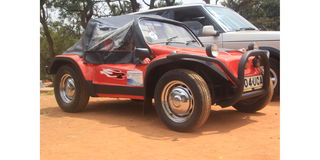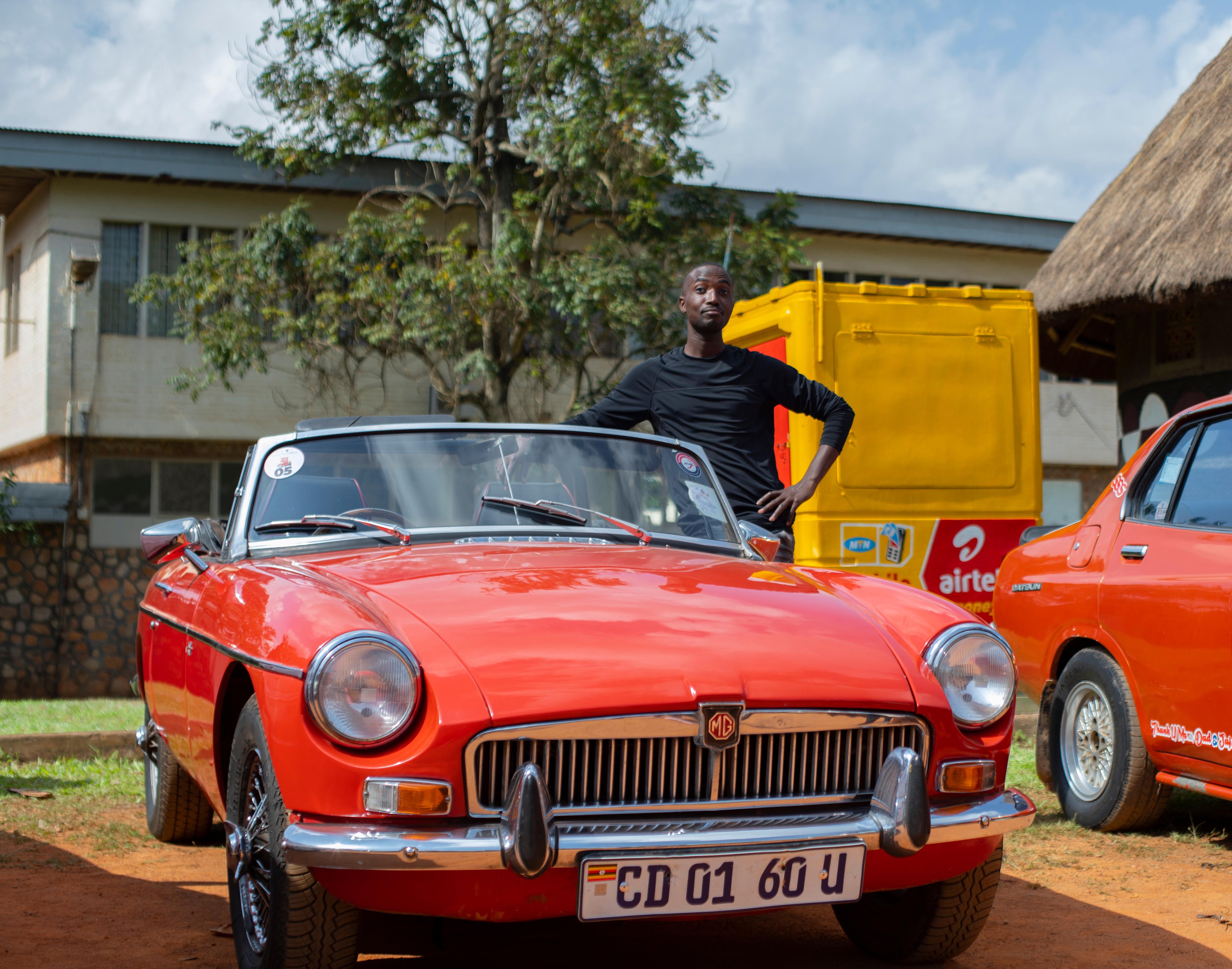Prime
It cost me Shs12m to restore my VW Buggy-Isingoma

Isingoma has managed to keep his Buggy in good condition by carrying out regular service and only driving it when necessary. PHOTO | ROLAND D. NASASIRA
What you need to know:
- A mechanic by training, Isingoma restored the Buggy at his workshop in Mulago, Kampala. The 57-year old machine runs on a 1300cc petrol engine.
The only way to get into and get out of Collins Isingoma’s Dune Buggy is by jumping in and out since it has no doors. Being a convertible with no roof, when he started restoring it to suit the purpose for which he needed it, Isingoma fashioned a jacket to provide shelter during the rains or hot weather.
Belonging to the Volkswagen family, Isingoma acquired his Dune, also known as a Beach Buggy in 2014 from a Swedish international who lived in Uganda at the time.
Since it had been parked for a while, to get it roadworthy, Isingoma had to restore a number of parts. Although it previously run on six volts, he restored it to 12 in order to make it compatible with local car batteries. He also restored the braking system and external body work. The seats were also refurbished to put the car in a presentable and drivable state.
“I replaced the brake master cylinder, battery, wiring system, tyres and redesigned the front and rear guards. Its body is made from asbestos and not metal. I also carried out an engine overhaul to replace the defunct parts since it had clogged and solidified oil particles for the time it was parked,” Isingoma says.
“I imported most of the spare parts from the United Kingdom and Germany. I did not want to modify it with parts from other car brands because I wanted to keep it Volkswagen. From experience, when you customise car parts from other brands, even when they serve the same purpose, the car will not run as smoothly as it does with original parts. Everything cost me approximately Shs12m,” he adds.
A mechanic by training, Isingoma restored the Buggy at his workshop in Mulago, Kampala. The 57-year old machine runs on a 1300cc petrol engine. Looking at his service manual, Isingoma last serviced his Buggy in November 2021.
He has driven it to Jinja City in eastern Uganda and Entebbe City, and on each of these journeys, he did not experience any mechanical breakdown. Unlike other cars that run on a water cooled engine, Isingoma’s is air-cooled.
Service and maintenance
Like any other car, Isingoma says he services his car after every 5,000km. However, he uses 5W50 Castrol oil that has performance capability of covering 10,000km.
“The challenge is that most people do not understand how to maintain VW engines. When it comes to oils and lubricants, it is all about using the right oil type. If you use other oil types other than 5W50, the engine wears out faster since it is air cooled. I gave it a mileage of 5,000km to keep it in shape but the oil can run until you cover 10,000km,” he explains.
Isingoma’s Buggy uses four litres of oil. However, when he uses Castrol oil, he does not replace or do top ups frequently. It also depends on how often you drive the car. A five litre tin of oil costs about Shs250,000.
Surprisingly, Isingoma’s speedometer is still at a humble 40,000km. Maybe this is because he only drives his car at the weekend and during public holidays when there is less traffic on the road. Running on a manual transmission, the Buggy is a classic sports car you can drive on a rough marrum road because its suspension is robust.
Its ground clearance is also good and runs on tyres and rims size 15, making it suitable for off-road performance. It sits two, with a small seat at the rear for children. It is a left hand drive with a four-speed gear, generating its wheel power from the rear-axle, with a 60-litre capacity fuel tank.
New Dune Buggy developments
According to electrek.co, the Meyers Manx, the iconic 1960s dune buggy, is returning as the new all-electric Meyers Manx 2.0. The original Manx, the first “dune buggy,” was a kit car, built on a modified VW Beetle chassis with a fiberglass body kit. It was popular in desert racing in the 60s, though the company folded in 1971. Bruce Meyers, the founder, brought the company back in 1999 and showed off an electric prototype in 2014. The company was sold to venture capital firm Trousdale in 2020.
“The new vehicle is not a kit car anymore. Instead, it will come fully assembled from the manufacturer with a design aesthetic similar to the original Meyers Manx but modernised (and with a very cool retro dash). The car was designed by Freeman Thomas, who designed the Audi TT and the modern VW New Beetle,” the portal explains.
The portal notes that for specs, like most early looks at electric cars, they may well change before the car comes out. Currently, the company is planning two different battery options, 20kWh and 40kWh, which it says will be capable of 150 and 300 miles of range. The car can be charged at 6kW on AC power or 60kW at a DC fast charger (as an option) – low compared to modern electric vehicles, but with a smaller battery, it should still charge plenty quickly.




